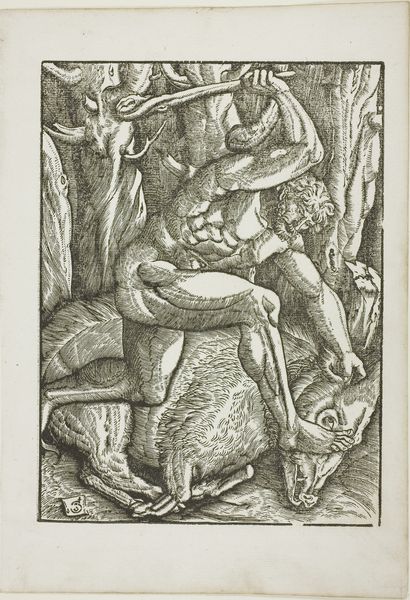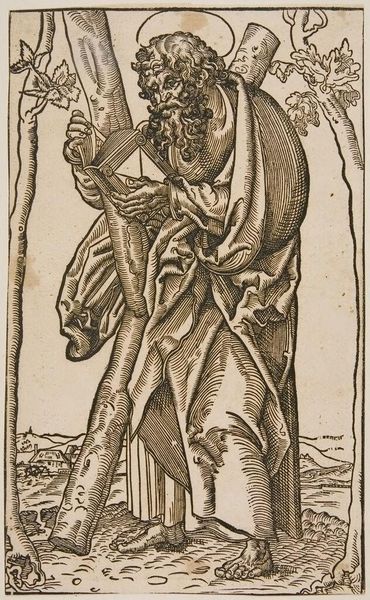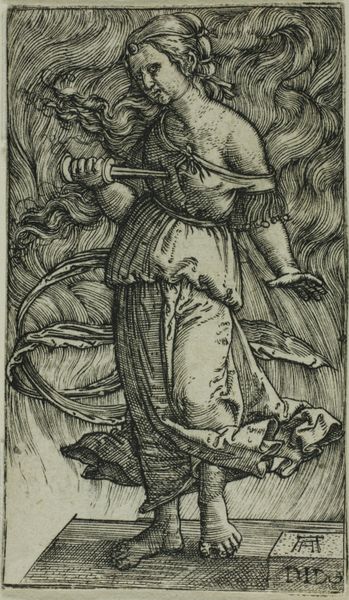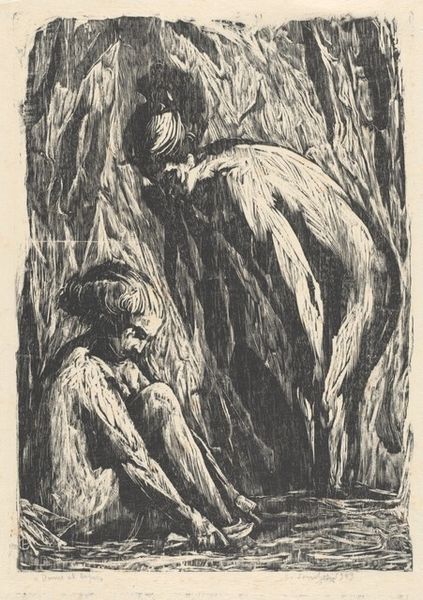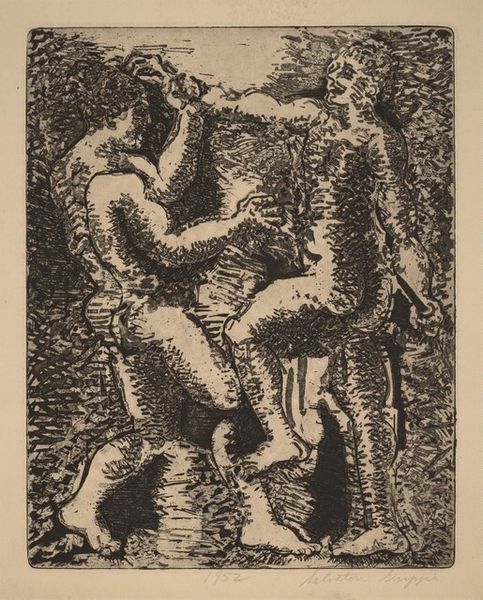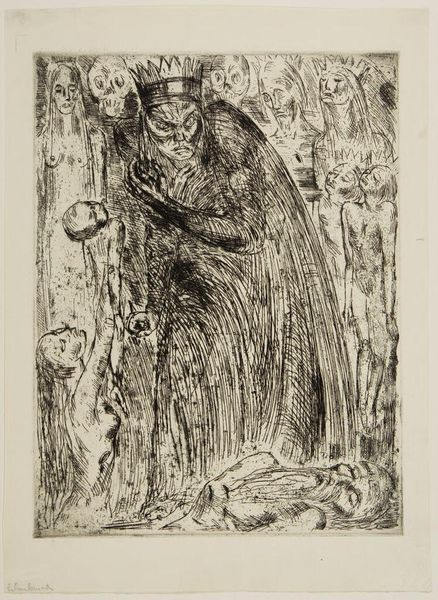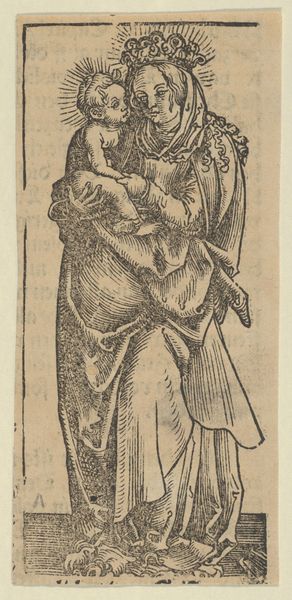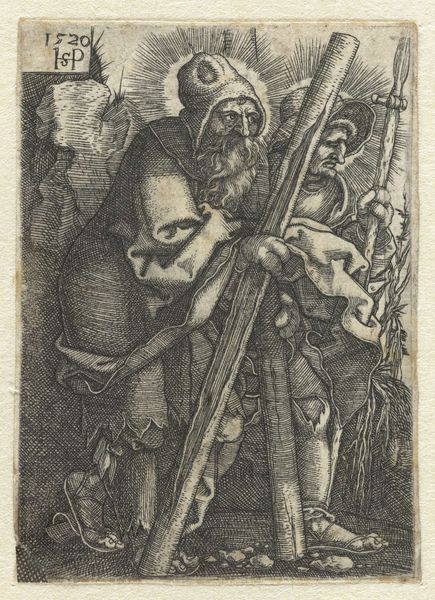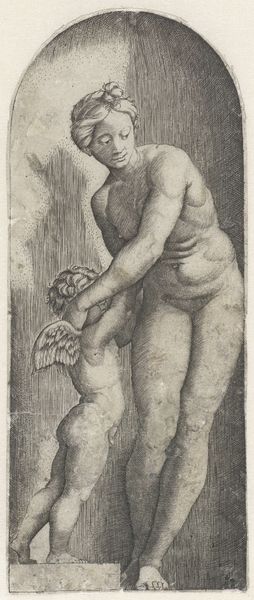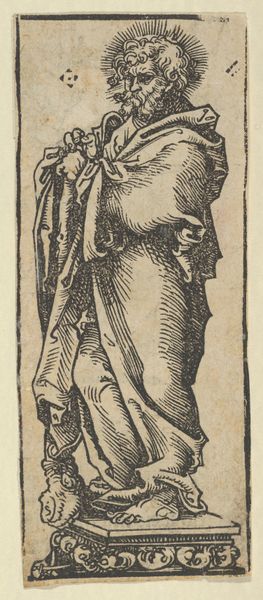
drawing, print, woodcut
#
drawing
#
narrative-art
# print
#
landscape
#
figuration
#
woodcut
Dimensions: overall: 35.3 × 25.1 cm (13 7/8 × 9 7/8 in.)
Copyright: National Gallery of Art: CC0 1.0
Curator: Today, we're looking at "Nike and the Shepherd Boy," a 1946 woodcut by Hans Orlowski. Editor: My initial response is somber. The high contrast and angular lines give it a stark, almost desolate feeling. It makes me feel an immediate sense of heavy unease. Curator: That tracks with Orlowski’s biography. He faced persecution during the Nazi regime, which profoundly impacted his art. This piece, in particular, speaks to the displaced and marginalized in post-war Germany, reinterpreting classical allegories through the lens of contemporary experience. Editor: Looking closer, I notice the shepherd boy’s gaze. It's averted, melancholic, almost accusatory. The heavy shadowing further isolates him. The texture in the lines— the ways they swell and then diminish, creating the robes of both figures – give a kinetic dimension despite the stillness. What could those varying depths symbolize here, within a semiotic framework? Curator: The Nike figure, a classical symbol of victory, is relegated to the background. Decaying. This speaks volumes about the shattered hopes and the re-evaluation of traditional ideals after such widespread destruction and moral failing. The pastoral setting is ironically rendered; it is far from idyllic, closer to a wasteland. Editor: It's as if Orlowski is dismantling the traditional visual language of heroism. The shepherd boy is not triumphant; he appears burdened. The negative space created by the dark woodcut style actually draws your focus. This stylistic tension generates meaning in itself. Curator: Exactly. Consider the political implications of reviving classical iconography in such a subversive way in post-war Germany. By presenting victory and the heroic in ruins, Orlowski offers a powerful indictment of the systems that led to such profound human suffering. Editor: It prompts me to consider art's purpose amidst political turmoil: as witness, as resistance, or perhaps as a space for collective mourning. Thank you. This piece and your analysis offer a valuable perspective on that complex dynamic. Curator: And for highlighting Orlowski's skillful technique that delivers so much of that emotion! An affecting piece, and an important reminder of art’s capacity for both reflection and critique.
Comments
No comments
Be the first to comment and join the conversation on the ultimate creative platform.

